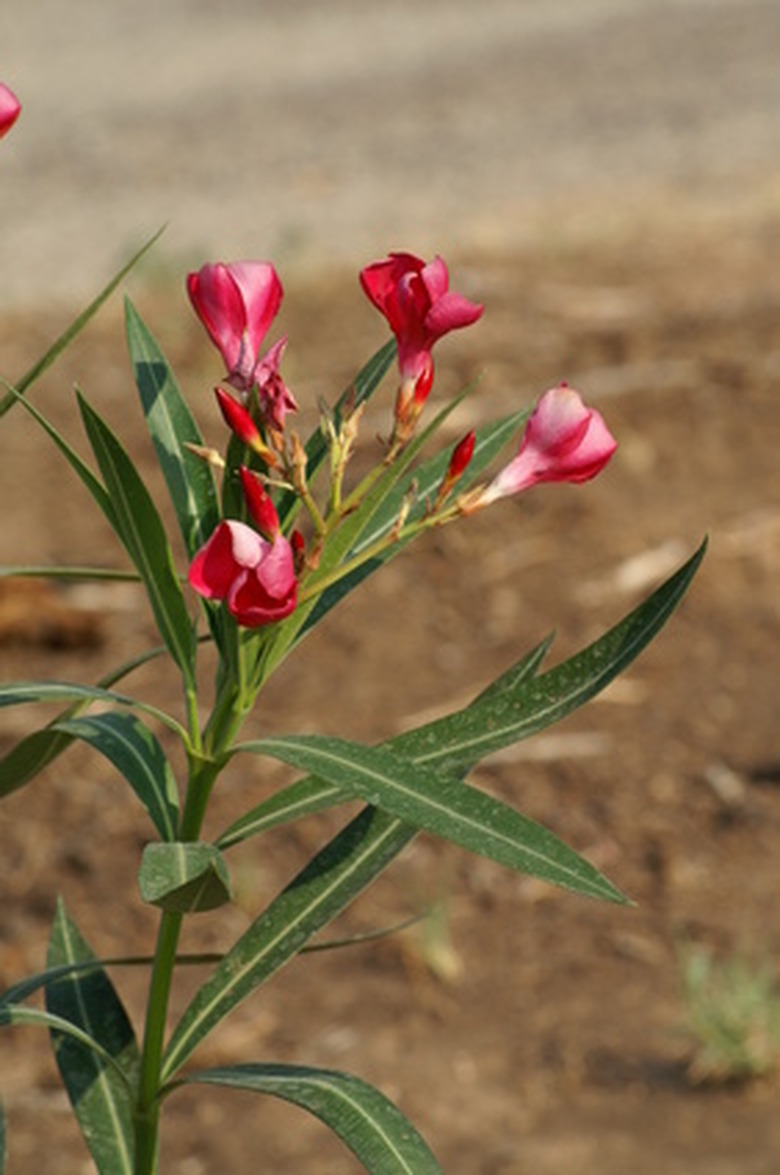Poisonous Tropical Plants
Poisonous plants are laced with alkaloids or chemicals that cause anything from mild irritation of the skin to the fatal breakdown of the body. Poison can be introduced through contact, or by ingestion of poisonous plant tissue. While most contact is non-lethal, it still can be dangerous causing blindness in extreme cases. Ingestion can cause an upset stomach, or in rare cases, death. It is important to know how to identify, and to avoid contact with poisonous plants.
Castor Bean
Castor bean is a tall woody plant that is an annual in the south and a perennial in the tropics and sub tropics of the United States. The Phytotoxin ricin is the cause of this plant's toxicity. The poison accumulates in the star-shaped leaves. The castor bean fruits also contain high concentrations of Phytotoxin ricin. The fruit is a-three lobed capsule that encloses three castor bean seeds and shiny grayish brown in color. The 1-inch fruit has a soft spiny exterior. Ingestion of the fruit and seeds is the common cause of poisoning, and can cause bloody diarrhea and abdominal pains.
- Poisonous plants are laced with alkaloids or chemicals that cause anything from mild irritation of the skin to the fatal breakdown of the body.
- Ingestion of the fruit and seeds is the common cause of poisoning, and can cause bloody diarrhea and abdominal pains.
Oleander
Oleander is a small tree that can grows up to 30 feet high. Its straight and leathery dark green leaves are easily distinguishable. Oleander flowers are mostly white, though red and yellow are also found. Glycosides oleandroside and Nerioside are the toxins in oleander, and are found in all parts of the plant. Cases of human poisoning have occured from eating food cooked on firewood from these tropical plants. The effects of poisoning include severe gastrointestinal problems and an elevated heart rate. They show up within a few hours and are non-lethal in most cases, but when complications such as advanced age or heart disease are involved, ingestion can be fatal.
- Oleander is a small tree that can grows up to 30 feet high.
- Oleander flowers are mostly white, though red and yellow are also found.
Lantana
Lantanas are shrubs or bushes that are often mistaken for weeds. Lantanin, a type of triterpenoid toxin, is present in all parts of this shrub. The plant bears scarlet flowers that are initially white or pale yellow, and greenish blue or black berries that are poisonous. Contact with the bush and its flowers can produce itching and irritation of the skin, and pollen from the flowers can damage the eyes. Abdominal pain is experienced upon ingestion. In animals, ingestion causes bloody diarrhea, and death can occur within three to four days if left untreated.
